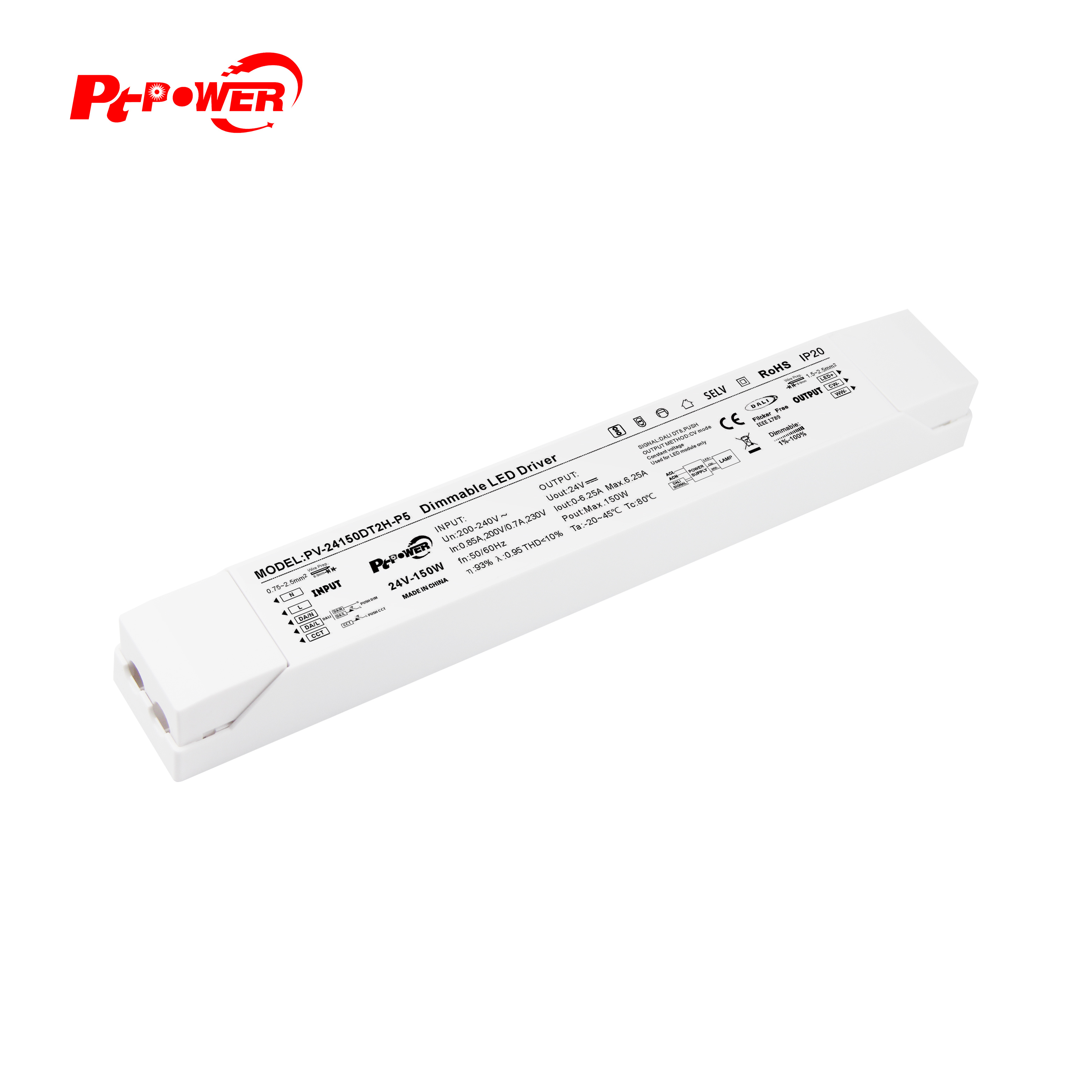How Energy-Saving LED Power Supplies Revolutionize Your Energy Consumption
2025-04-18

How Energy-Saving LED Power Supplies Revolutionize Your Energy Consumption
Table of Contents
- Understanding LED Power Supplies
- The Importance of Energy Efficiency
- How LED Power Supplies Work
- Benefits of Energy-Saving LED Power Supplies
- Choosing the Right LED Power Supply
- Applications of LED Power Supplies
- The Future of LED Power Supplies
- Frequently Asked Questions
Understanding LED Power Supplies
LED power supplies are vital components in the world of lighting technology. They convert the electrical power from the grid into a form that is usable for LED lighting systems. Typically, these power supplies either come as constant voltage or constant current sources. They ensure that the LED lights receive stable and consistent power, which enhances performance and maximizes their lifespan.
Unlike traditional incandescent bulbs, which waste energy in the form of heat, LED lights are much more efficient. This efficiency is made possible thanks to the sophisticated technology utilized in LED power supplies. By incorporating features such as power factor correction and thermal management, these power supplies ensure minimal energy waste, thus contributing to overall energy savings.
The Importance of Energy Efficiency
In today's world, energy efficiency is not just a trend; it is a necessity. With the rising costs of energy and the pressing need to combat climate change, efficient energy consumption has become critical. Energy-saving LED power supplies play a significant role in this landscape.
By significantly reducing energy consumption, these power supplies help lower electricity bills for consumers and businesses alike. Moreover, they contribute to reducing greenhouse gas emissions. According to studies, switching to LED lighting can reduce energy usage by up to 75%, making it a crucial component in energy-saving initiatives.
How LED Power Supplies Work
To understand the transformative impact of LED power supplies, it’s essential to grasp how they function. These power supplies adjust the incoming voltage and current to match the specific requirements of the LED lights.
**Constant Voltage Power Supplies** are designed to provide a steady voltage output. They are suitable for LED strips and string lights, where the voltage remains consistent, but the current can vary depending on the number of LEDs in the chain.
**Constant Current Power Supplies**, on the other hand, deliver a consistent current to the LEDs. This is particularly important for LED modules, which require a specific current to operate efficiently. By doing so, these power supplies prevent overdriving, ensuring the longevity and performance of the LEDs.
In addition to these types, high-quality LED power supplies also feature safety mechanisms, such as short-circuit protection and over-temperature protection. This ensures that both the power supply and the connected LEDs remain safe during operation.
Benefits of Energy-Saving LED Power Supplies
The transition to energy-saving LED power supplies offers numerous advantages:
1. **Significant Energy Savings**
Energy-saving LED power supplies can drastically reduce energy consumption compared to traditional lighting systems. This reduction translates into lower utility bills, making it an appealing option for both residential and commercial settings.
2. **Enhanced Performance and Lifespan**
LEDs powered by efficient power supplies have a longer lifespan. By providing the correct voltage and current, these power supplies minimize the stress on the LEDs, which can extend their operational life significantly.
3. **Lower Heat Emission**
One of the standout features of LED lighting is its lower heat output compared to incandescent and fluorescent lights. Coupled with energy-efficient power supplies, this characteristic helps in maintaining a cooler environment, reducing the need for additional cooling systems.
4. **Environmental Benefits**
By using less energy, LED power supplies contribute to lower carbon emissions. The shift toward energy-efficient lighting is crucial in the battle against climate change.
5. **Compatibility with Smart Technology**
Many LED power supplies are now designed to integrate seamlessly with smart technology. This compatibility allows users to control their lighting more effectively, further enhancing energy savings through automation and scheduling.
Choosing the Right LED Power Supply
Selecting the correct LED power supply is crucial for maximizing the benefits of LED technology. Here are some factors to consider:
1. **Understand Your LED Requirements**
Before choosing a power supply, identify the voltage and current requirements of your LEDs. This information is typically available in the product specifications.
2. **Consider the Type of Application**
Different applications may require different types of power supplies. For instance, a constant current power supply is ideal for LED modules, while a constant voltage supply may work better for longer LED strips.
3. **Look for Energy Efficiency Ratings**
Check for energy efficiency certifications such as Energy Star or CE. These ratings provide assurance that the power supply meets specific energy efficiency standards.
4. **Assess the Quality and Reliability**
Opt for reputable brands that offer warranties and have a track record of producing reliable power supplies. Quality assurance will ensure that you receive a product that performs well over time.
5. **Evaluate Features and Technology**
Consider additional features such as dimming capability, remote control, and built-in protection mechanisms. These features can enhance usability and safety.
Applications of LED Power Supplies
Energy-saving LED power supplies are versatile and can be used in a variety of applications:
1. **Residential Lighting**
From ceiling lights to outdoor garden lights, LED power supplies can enhance the beauty and functionality of residential spaces while conserving energy.
2. **Commercial Lighting**
Businesses can significantly reduce operational costs by switching to LED lighting powered by energy-efficient supplies. Retail spaces, offices, and warehouses all benefit from this technology.
3. **Industrial Applications**
In industrial settings, LED power supplies are employed in large-scale lighting systems, machinery, and equipment, facilitating safer and more efficient working environments.
4. **Architectural and Decorative Lighting**
LED power supplies are essential in architectural applications, where lighting design plays a pivotal role in aesthetics and functionality.
5. **Signage and Displays**
LED-powered signage is prevalent in advertising and information displays, providing vivid colors and longevity, powered by reliable LED power supplies.
The Future of LED Power Supplies
As technology continues to evolve, the future of LED power supplies looks promising. Innovations in energy efficiency and smart technology integration are paving the way for even more advanced solutions.
The rise of the Internet of Things (IoT) will likely lead to smarter power supplies that can adapt to user needs in real-time. This could include features like self-dimming based on ambient light or automatic adjustments based on occupancy.
Furthermore, ongoing research and development in materials science may yield even more efficient power conversion technologies, driving down losses further and enhancing the sustainability profile of LED technology.
Frequently Asked Questions
1. **What are LED power supplies?**
LED power supplies convert electrical energy into a form that can be used by LED lighting systems, ensuring stable and consistent power.
2. **Why are energy-saving LED power supplies important?**
They reduce energy consumption and costs while contributing to environmental sustainability by lowering greenhouse gas emissions.
3. **How do I know which LED power supply to choose?**
Consider factors such as voltage, current requirements, application type, energy efficiency ratings, and additional features when selecting a power supply.
4. **Can I use a regular power supply with LED lights?**
Using a regular power supply can damage LED lights. It is crucial to use a power supply specifically designed for LEDs to ensure optimal performance.
5. **What is the lifespan of an LED power supply?**
The lifespan of an LED power supply varies based on quality and usage but can generally range from 5 to 10 years or more, provided it is used correctly.
Conclusion
Energy-saving LED power supplies are revolutionizing the way we consume energy. Their efficiency, reliability, and environmental benefits make them an indispensable part of modern lighting solutions. As we continue to seek sustainable alternatives to conventional power sources, embracing LED technology with high-quality power supplies will undoubtedly play a significant role in shaping a more energy-efficient future. By making informed choices, we can not only save on costs but also contribute to a healthier planet for generations to come.







